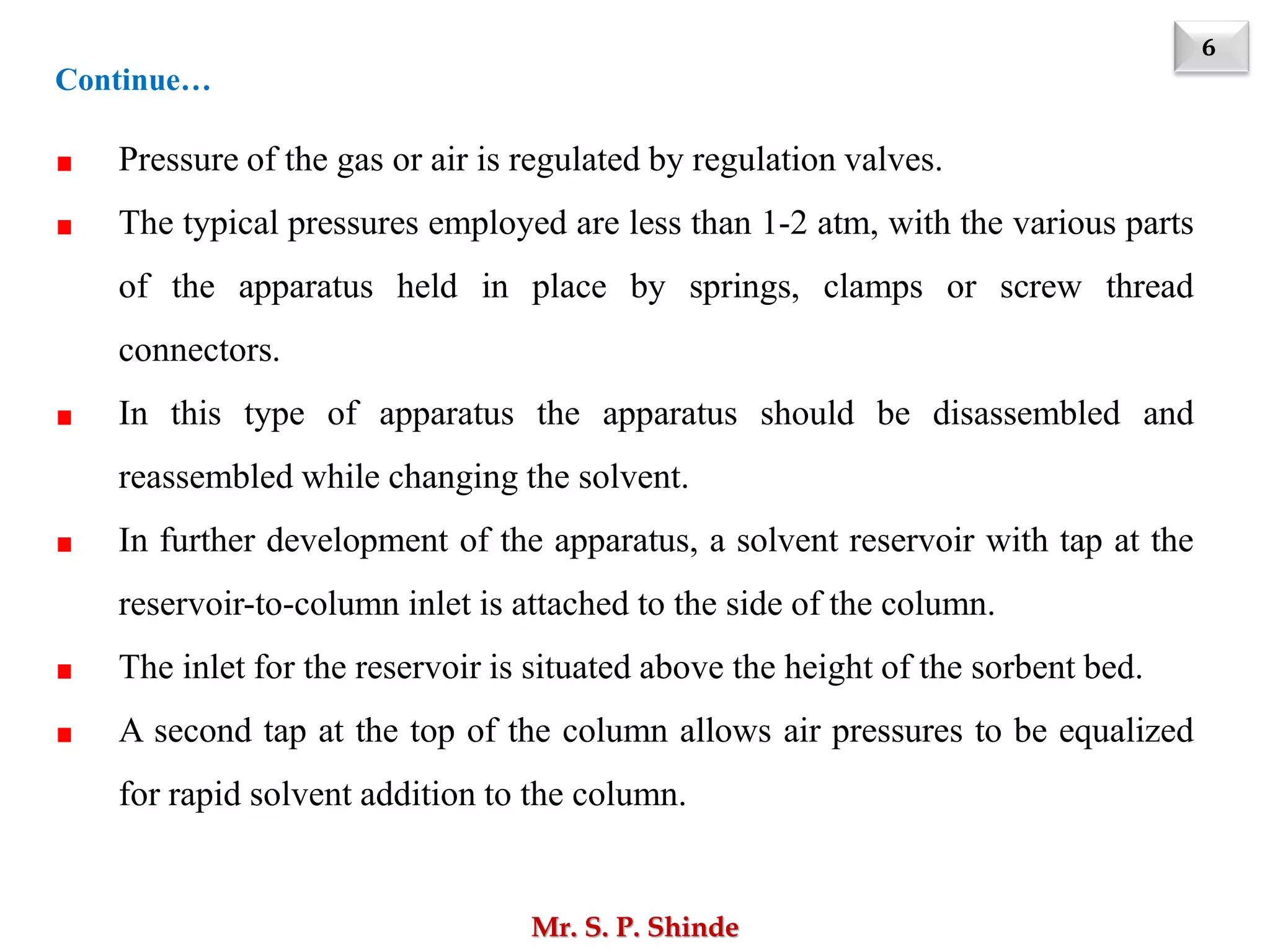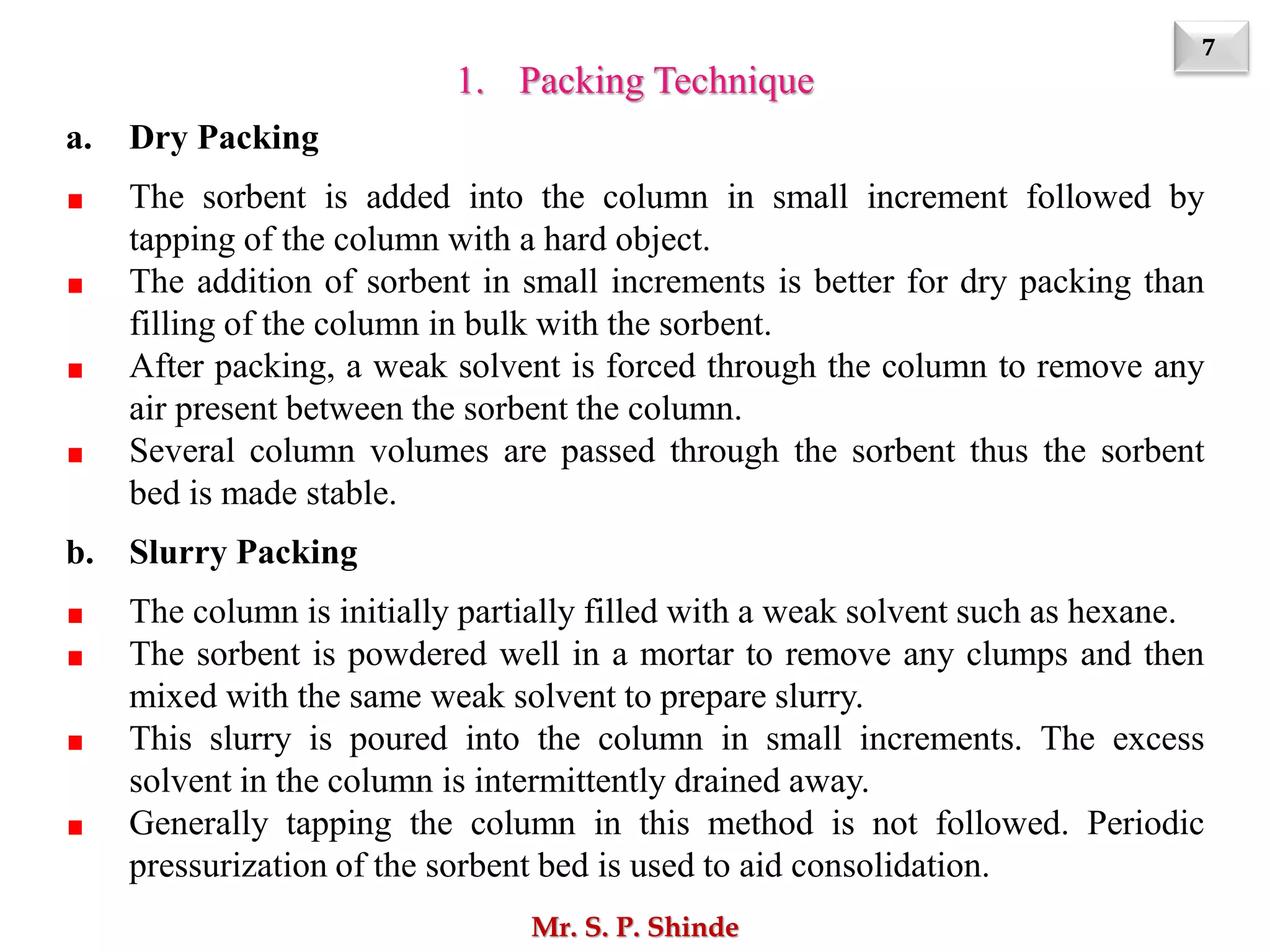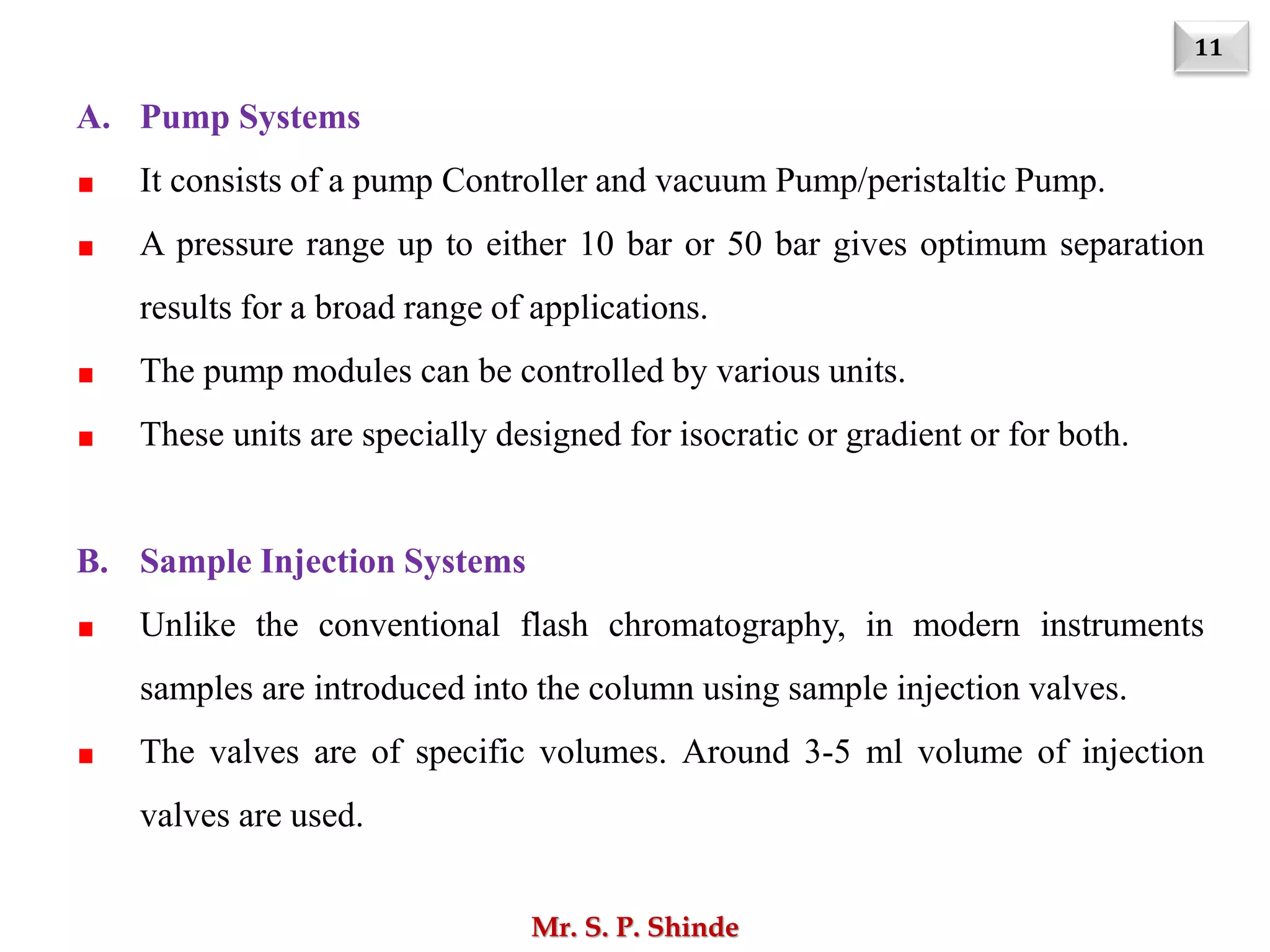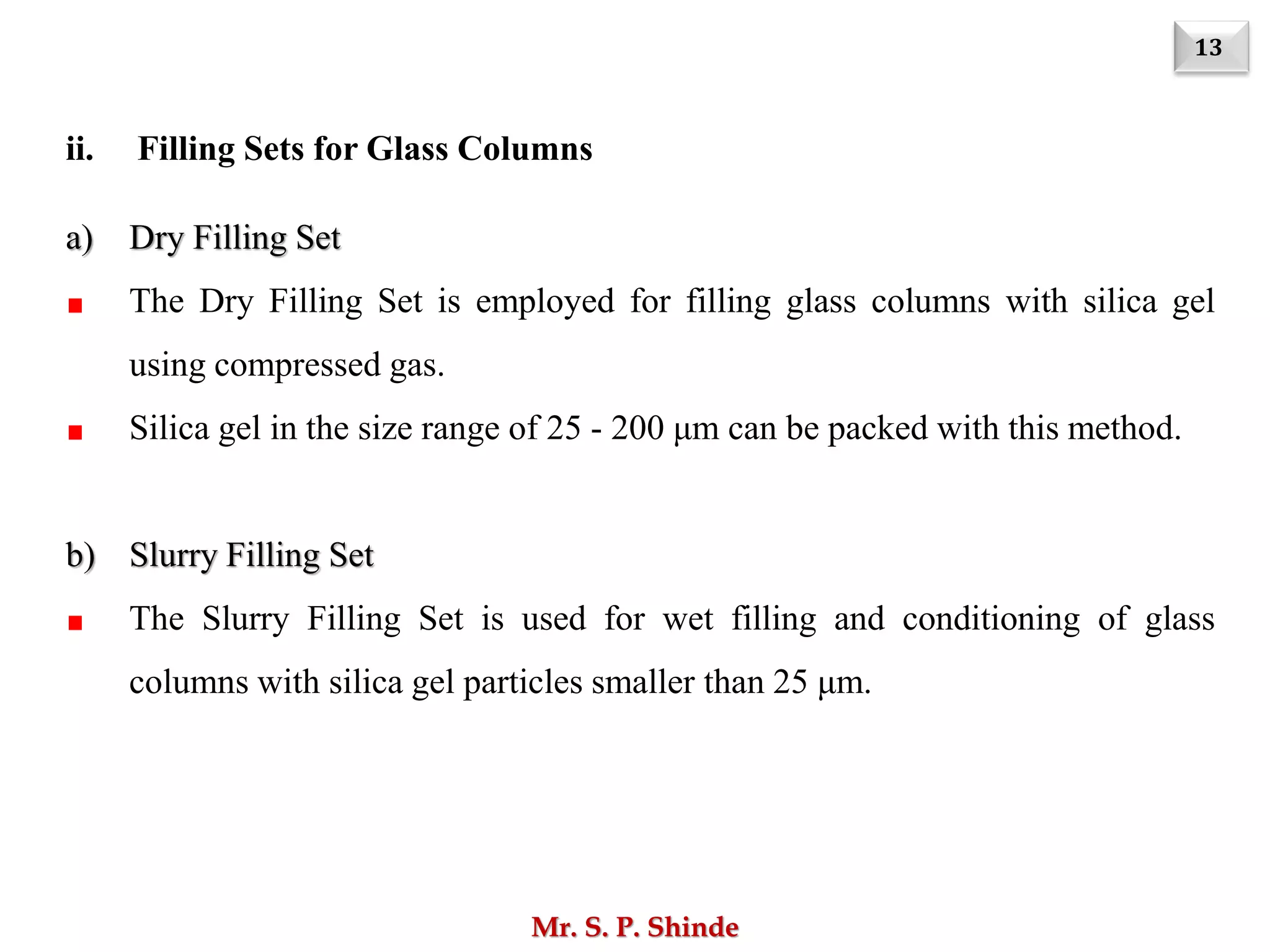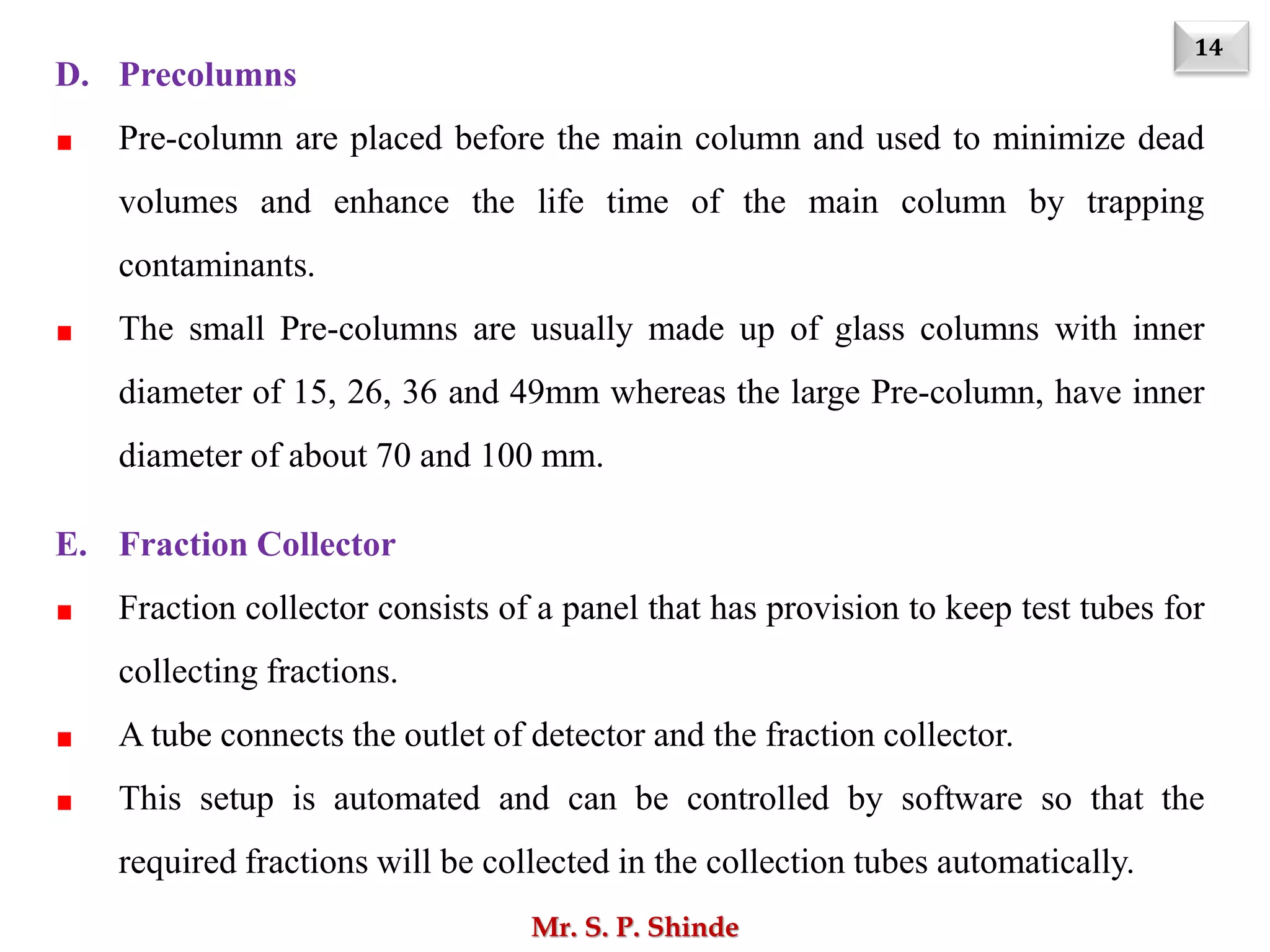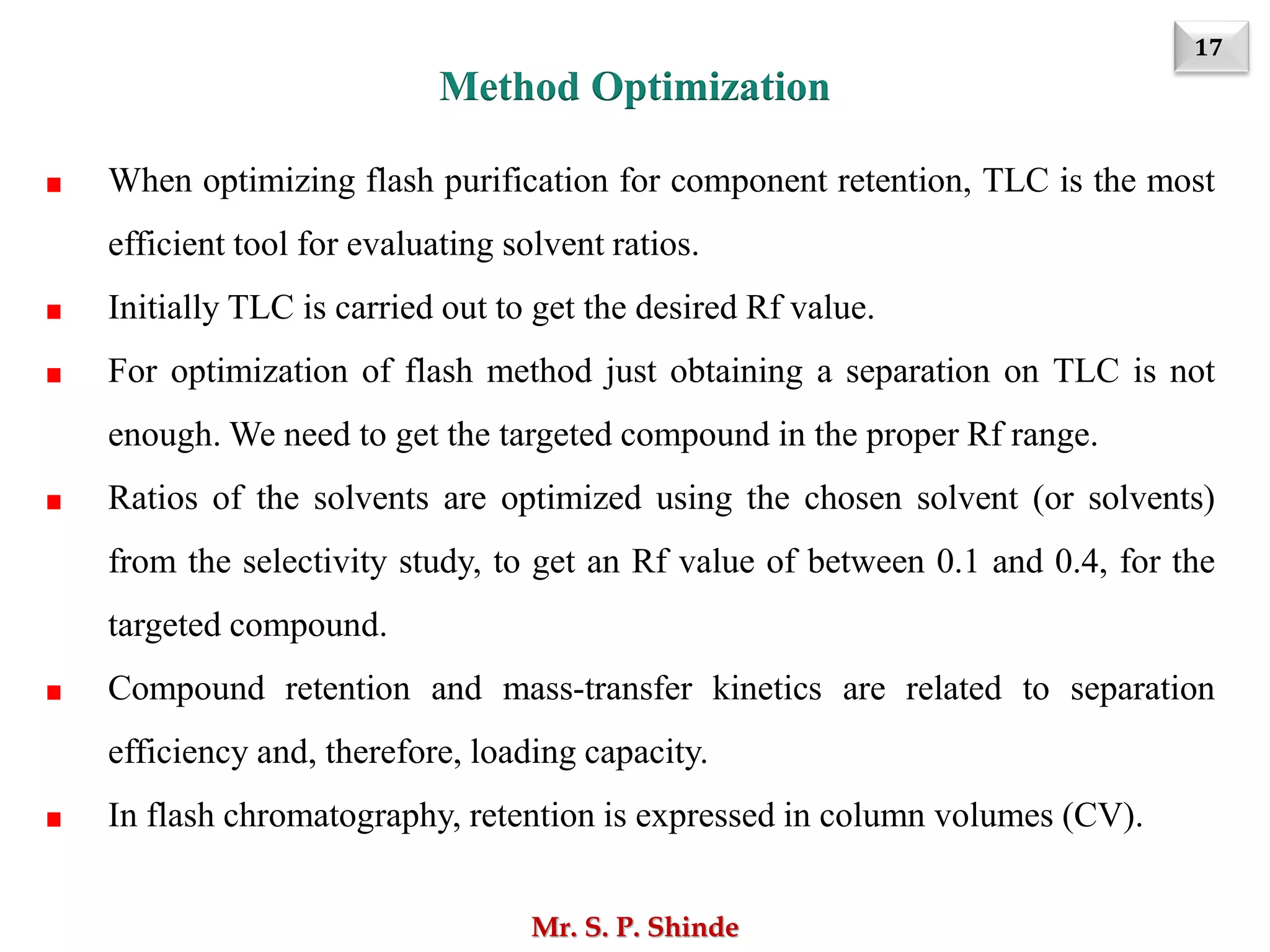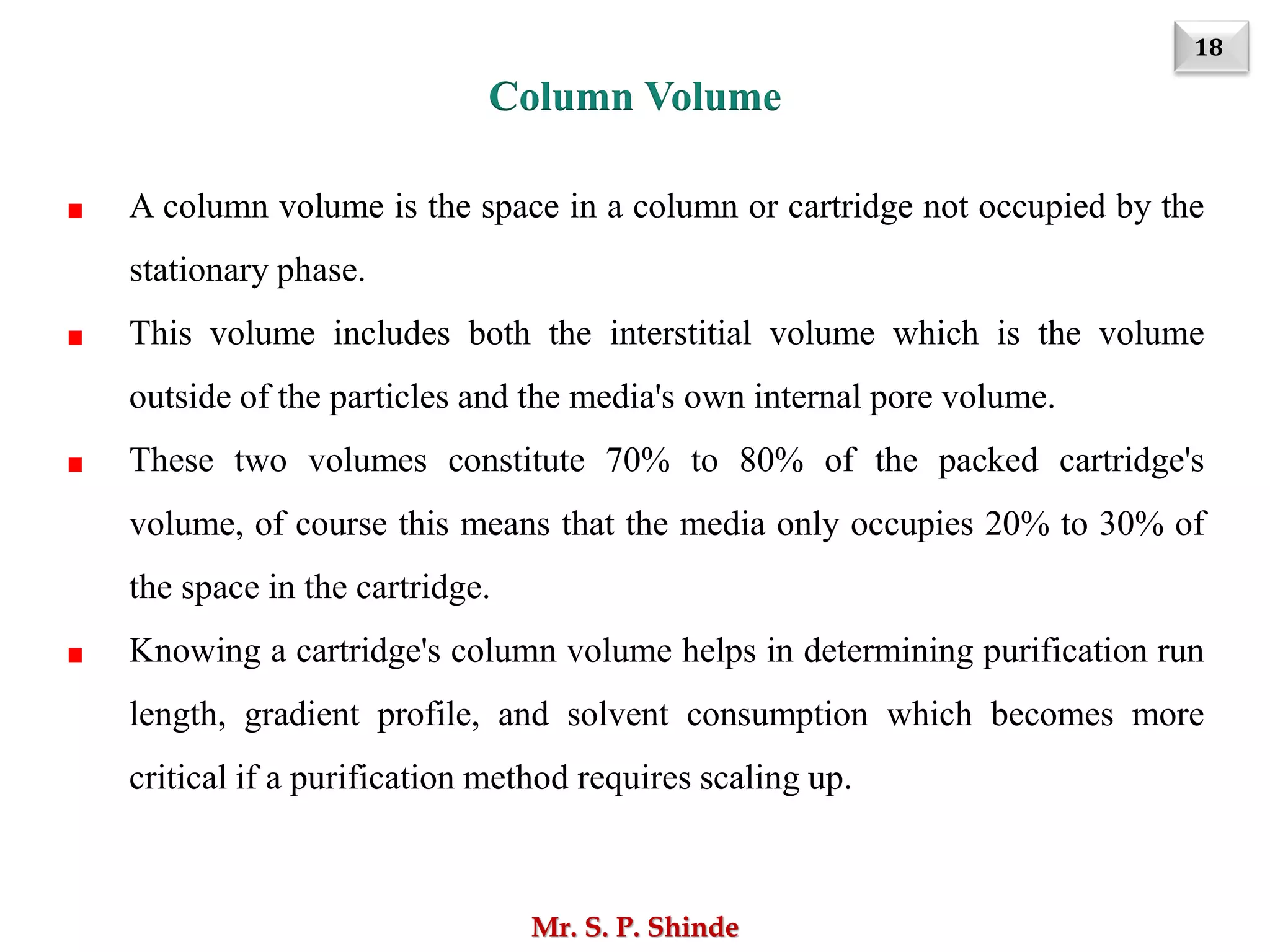Flash chromatography, developed by Mr. Sanket P. Shinde, is a rapid preparative column chromatography technique that operates under pressure, facilitating the separation of analytes based on their distribution between an adsorbent and eluent. This method utilizes a pre-packed column with silica gel and employs both dry and slurry packing techniques for optimal efficiency. Modern advancements have led to automated systems with pre-packed cartridges, enhancing reproducibility and reducing solvent use in various applications, including the purification of synthetic compounds and isolation of natural products.





